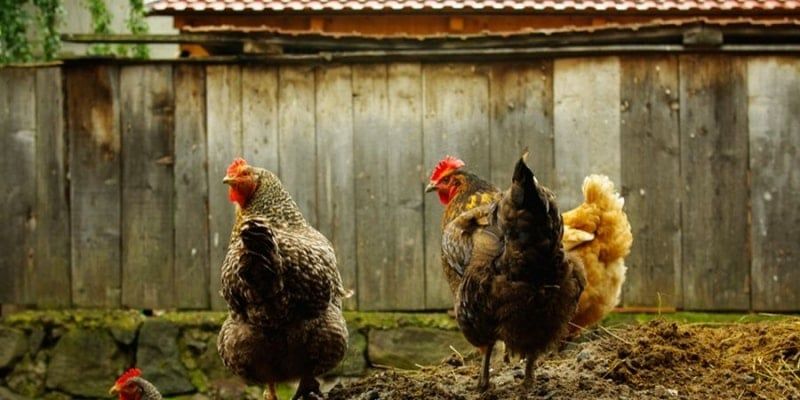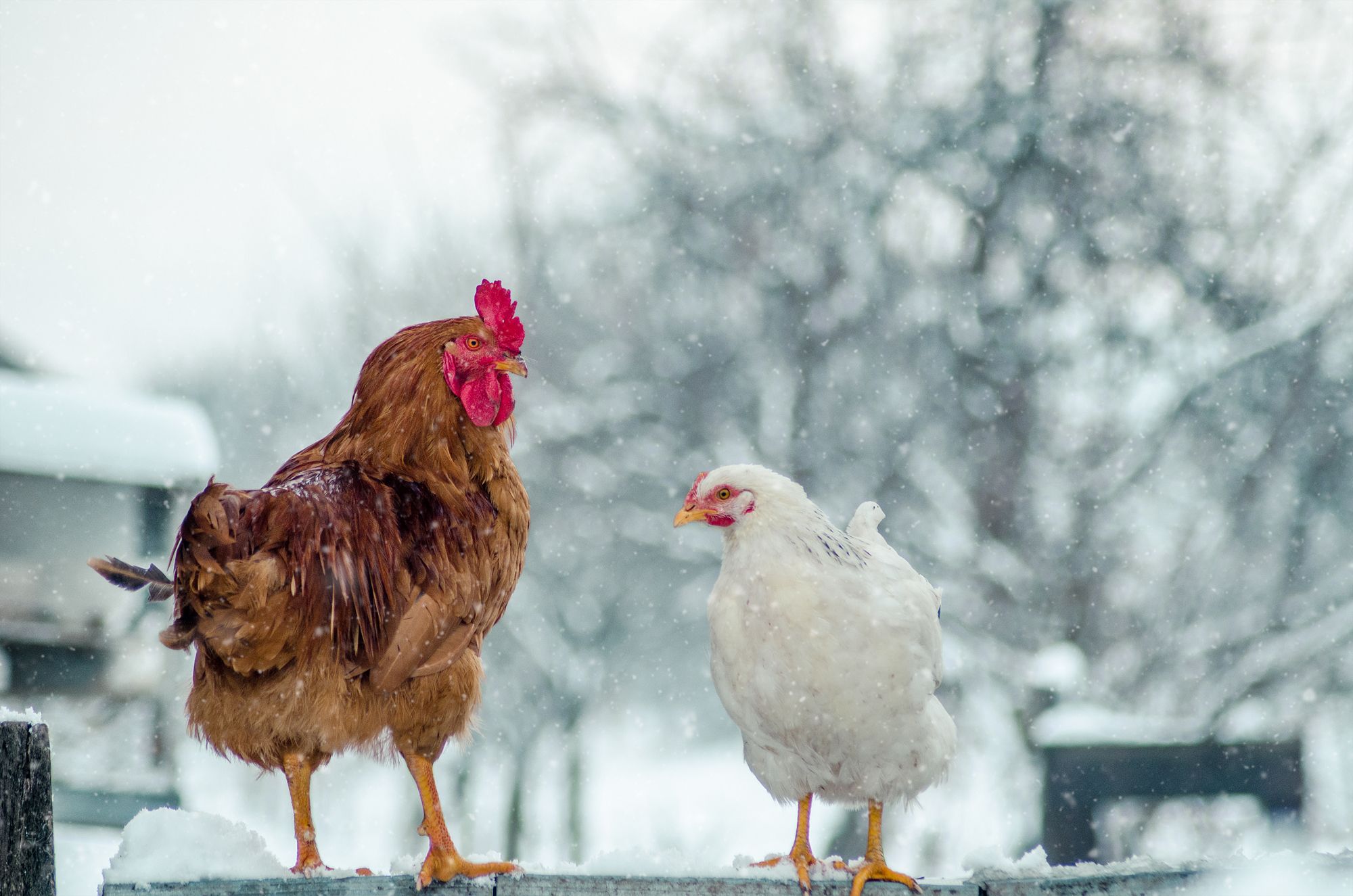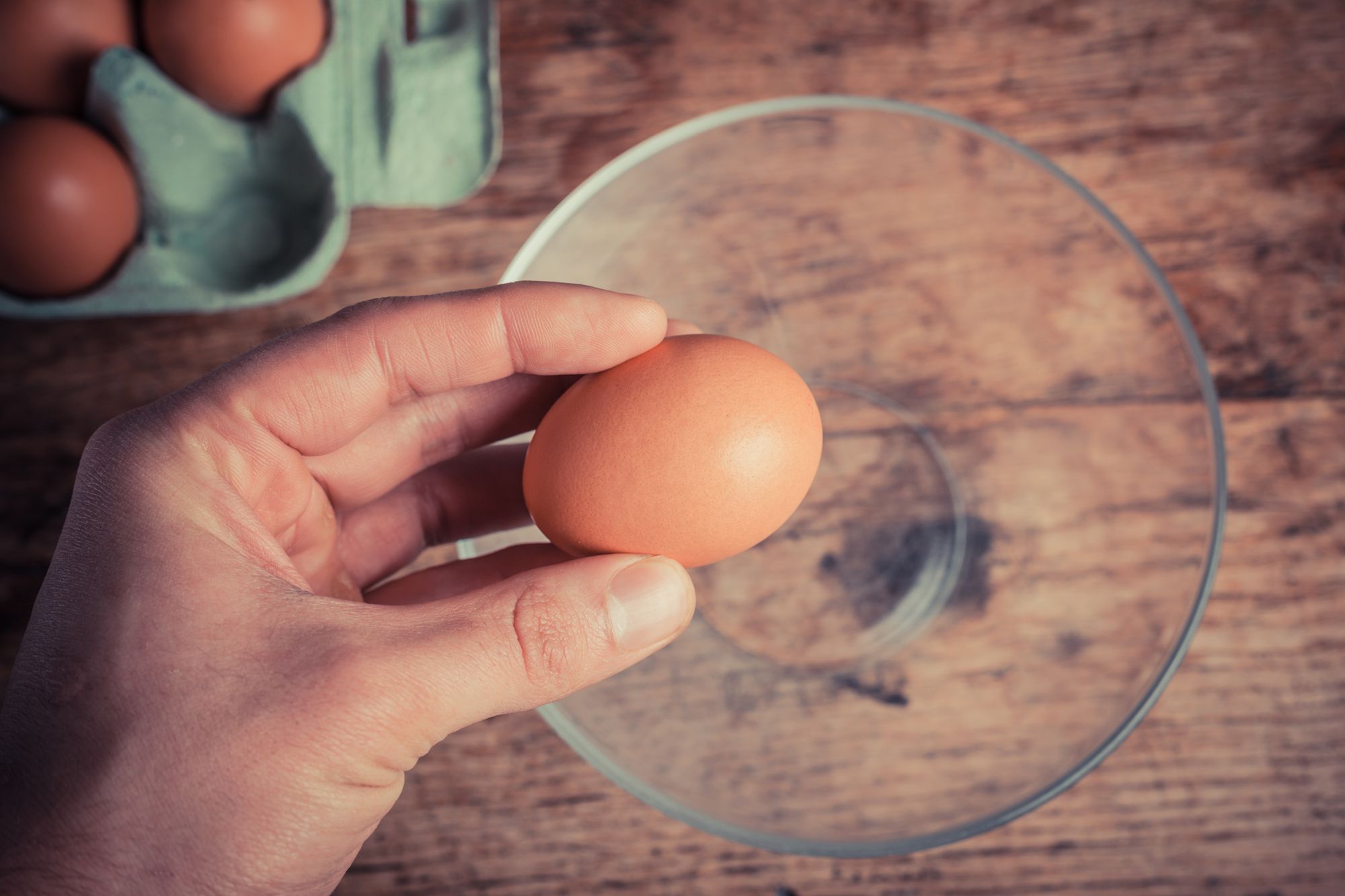The Chicken Goes Full Circle


Supplying more than just eggs
These days, when it’s not so unusual to find Dominiques and Delawares strutting through our suburban yards, it’s easy to see the birds as delightful lawn ornaments rather than what they really are: working livestock that are remarkably effective in supporting domestic food production and managing the household waste stream.
In fact, before the days of rototillers and landfills, poultry were a key element in preparing garden beds, handling insect control, and building home compost by devouring kitchen scraps and furnishing nitrogen-rich manure. The fact that their eggs and meat provided ready protein for the family was a side benefit that tagged the birds as creatures able to complete the life-cycle loop without a lot of human intervention.
If you have a garden and a compost pile, you’ll find that even a small flock of chickens can work wonders in bed preparation and ongoing soil-building chores. If you’ve been looking for a reason to keep a few birds, read on. You might be surprised at how versatile the chicken can be, even in an urban environment.
Chickens in the garden
It may seem contradictory that gardens and chickens could work together. After all, everyone knows that free-ranging birds are notoriously non-selective when they get into a verdant bed, eating leafy greens, scratching up precious plants, and making a dust-bath moonscape of a once well-tended plot. But with a bit of planning and perhaps some rethinking of your personal gardening techniques, you’ll be able to put the flock to work in a beneficial and non-destructive way.
One very simple practice is to allow your birds to prep the garden before the actual growing season. There are several ways to take advantage of the chickens’ natural inclination to scratch for slugs and bugs, the easiest being to set up some temporary electric fence netting—described in the Spring 2015 issue of Chicken Whisperer Magazine—and set the birds free to work within your prescribed enclosure. A typical 164-foot netting kit will allow you to enclose an area about 40 feet on each side, with the fence available in 28-, 40-, and 48-inch heights. Smaller kits made in 82-foot lengths will enclose a roughly 20- by 20-foot section.
If you don’t care to invest in electric netting, building a basic chicken tractor will accomplish the same thing on a smaller scale. For those new to the world of poultry, a chicken tractor is a portable frame enclosed with wire netting and open at the bottom. Wheels on one end and handles on the other allow the cage (some are 4 feet wide and up to 12 feet in length) to be moved from section to section as the birds’ work is completed. With proper management, a lot of ground can be covered in stages with very little investment.
Those gardeners who plant cover crops like rye, alfalfa, or mustards can establish a rotation schedule in conjunction with the use of chickens. One plot can be sown in cover, while another is used for cultivation. The following year, the plots can be reversed, with the birds working the cover plot prior to new planting.
The advantage is the free labor plus the benefit of the chicken droppings. The disturbance of the soil encourages the decomposition of root structures and the creation of air channels that support subsurface organisms while allowing the penetration, rather than runoff, of rainwater.
Let’s not forget that chickens are particularly partial to slugs and snails. Introducing them pre-season to a garden plot prior to planting wreaks enough havoc on an emerging population that their impact in the subsequent months is greatly reduced.
Slugs and larvae are high in protein, and if you happen to be a beekeeper, you’ll find a mission for your flock in cleanup chores, particularly after an infestation of wax moths. The insects take advantage of weak hives, and after adult moths have laid their eggs in crevices inaccessible to bees within the hive, the larvae feed on honeycomb and their contents. The maggot-like larvae are particularly repugnant and cleaning the frames and supers for re-use can be a powerful emetic, even for those with strong stomachs. Not so for the chickens, who feast on the larvae and strip their silk webbing from the hive bodies, leaving the wood components relatively clean for a good airing and another go-round.
Chickens and composting
One of the most important aspects of keeping a garden is building soil. When we make compost, we’re not just providing an amendment, but manufacturing a nutrient-rich humus for future growth. Compost enriched with chicken manure is a natural and effective way to feed the soil with rich organic matter.
Though it’s true that the addition of manure and chicken litter to the garden is beneficial if done in moderation, the entire process is so much more effective if you can enlist chickens in the effort to turn the combination of nitrogen-based materials (plant matter, manure, greens, grass) and carbon-based matter (straw, twigs, dried leaves) into the stuff we call compost.
In the traditional—and labor-intensive—method, the components are layered within some type of enclosure and turned by hand with a fork several times in the process, all while monitoring moisture levels and assessing the degree of decomposition before adding new materials. The resulting compost is then tilled into the soil where the microbes continue their work.
Chickens are nowhere near as fussy, and will work what is provided to them when the time is ready. And there is far less human effort involved. The process can be as simple as dumping the required ingredients into the area you want to work and setting up some protective netting. The carbon-to-nitrogen ratio of traditional composting is less critical in this situation since the birds will be constantly turning the mix and adding their own manure in addition to any supplemental manures you may have included in the mix. You should consider anything compostable fair game, and that includes garden wastes, fall leaves, stems, twigs, weeds, grass clippings, and any kitchen waste not suitable for the birds’ direct consumption.
Being a process of natural decomposition, it will take some time for the mix of materials to break down and invite the bonanza of bugs, grubs, worms, and rhizomes that chickens love so dearly. But once they’ve discovered that the pile has come alive they’ll be on it with an intensity and fervor that’ll keep them busy for weeks and keep you supplied with fertile, nutrient-rich soil fully capable of holding moisture and supplying your garden’s needs.
If you feel more comfortable working on a smaller scale, you can set aside a portion of your garden as a compost-making area, convenient to the organic debris created in keeping a garden. Here, weeds, dead plants, and other materials and supplemented with whatever else you care to add. By providing the chickens with a safe enclosure and some basic shelter suitable for the warm weather season, you can create a mini compost factory right by the garden until it’s time to wrap things up for the winter.
When planning even an elementary enclosure, it’s important to keep in mind that it has to be tall enough for comfortable access, protected from overhead predators with wire or plastic netting, and accessible through a door wide enough to handle a wheeled cart. There is nothing more frustrating than cramped quarters in an area where there’s shovel work to be done.
But even if you don’t have a garden, you’ll discover that maintaining a small compost pile that your birds have access to will reduce the volume of landfill-bound household waste substantially. Using my own experience as an example: Prior to keeping chickens and active composting, our household of two kept a pair of large wheeled trash containers full and our local pickup service busy with weekly trips to the landfill.
After building a small compost bin, we directed all the kitchen waste (with the exception of meat and fat scraps) to the working pile. Keeping the compost turned and balanced was a chore, but it reduced our bagged output noticeably. Still, a lot of green material found its way into the bin, adding to the volume and weight of the decomposing mass.
With the introduction of chickens, anything edible went to them. Exceptions included onions and garlic, potato skins, meat, and of course anything moldy or unsuitable for poultry consumption. The volume of landfill-marked material dropped to about one bag a month and we were able to cancel the pickup service, putting the money we saved towards supplemental feed, oyster shell, and grit.
We now use a scaled-down version of the chicken composting method to work our piles on a rotational basis. Alongside the kitchen-waste bin, which has a removable front panel, we keep a comparable heap of unenclosed material made up of mostly finished compost and expended litter from the coop. We feed this regularly, and when the organisms within become active, the birds go to work on it. It’s usually the first place they go when they’re freed from their run.
That pile supplies our modest garden, and we distribute the coop litter during cleaning for the most part, although we will occasionally feed some to the bin pile if it appears to be a bit sluggish. Once in a while, after a fresh turning, we remove the bin’s front panel and let the birds tear through the working pile if it’s sufficiently decomposed. The point is to avoid giving them access to moldy or unsuitable food.
Chickens, without a doubt, are some of the best-working livestock you can keep if you give them the opportunity. Where else can you find an animal that builds the soil, tends your garden, and almost feeds itself, all the while supplying you with a ready supply of natural protein?
Tags:Hot Topics

Chicken Whisperer is part of the Catalyst Communications Network publication family.











